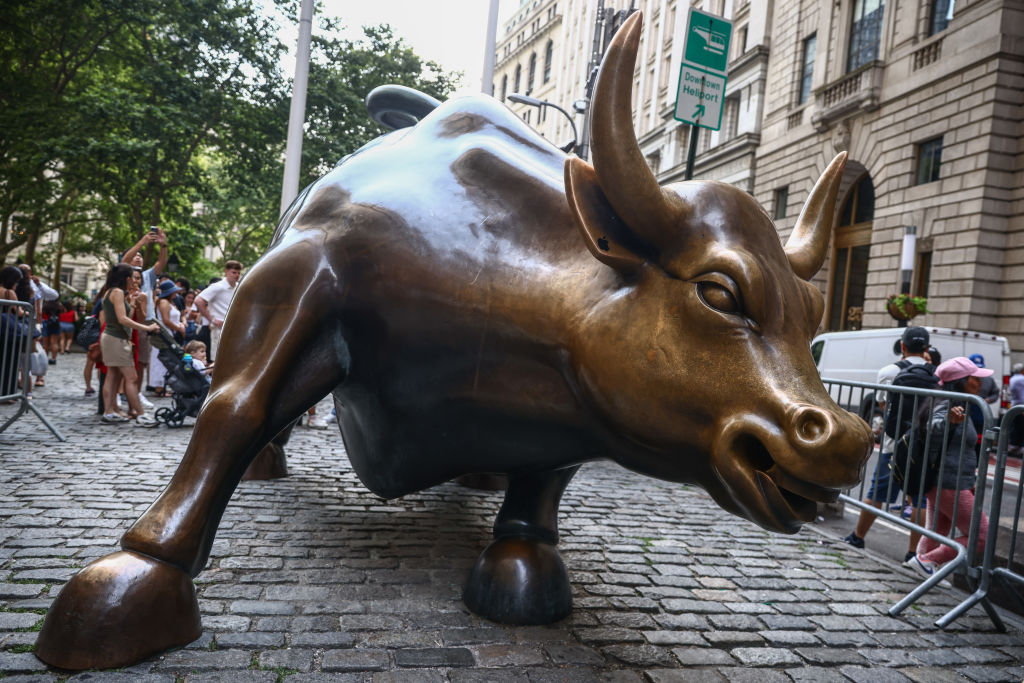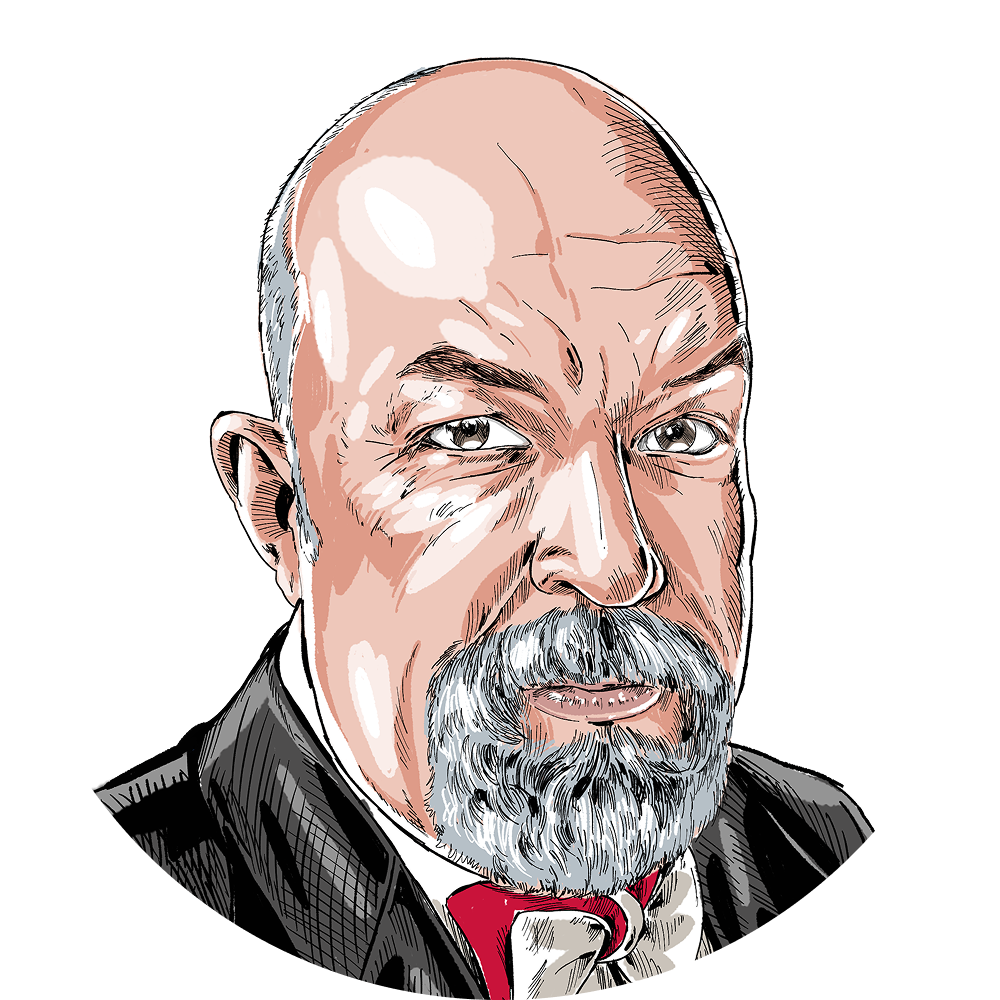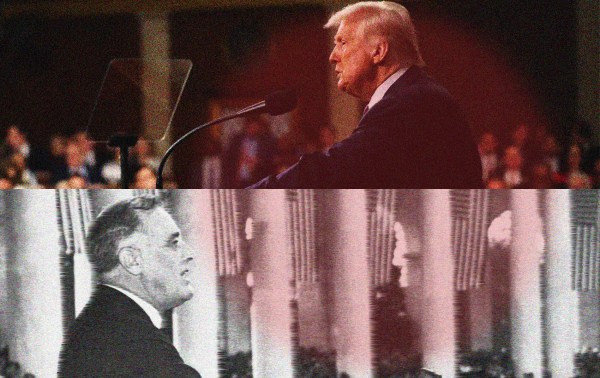If there is one thing everybody knows about Wall Street, it is that the boys in the pinstripe suits reliably support the Republican Party—the party that offers to cut their taxes and lighten their regulatory load. It is one of those things that everybody knows that isn’t true.
In reality, Wall Street has been trending Democratic for decades, for reasons that are not difficult to guess. Financial services firms tend to be concentrated in big cities and staffed by college-educated professionals—and affluent urban voters today lean Democratic, as do their nearby suburban counterparts. And even though what we call “Wall Street” doesn’t really live on Wall Street anymore, the business is culturally dominated by people with big city, East Coast backgrounds. The CEOs of JPMorgan Chase and Morgan Stanley were born in New York City, while David Solomon of Goldman Sachs came all the way from … Westchester County.
Affluent urban and suburban professionals have trended Democratic only partly because of policy considerations. In the main part, their migration has been more driven by cultural and social sensibilities. As the GOP has become more southern, more evangelical, and more demonstratively boobish, people working in finance have moved into the party of Barack Obama. Considering one of the forerunners of today’s Republican populism, one Wall Street veteran told me in 2008: “Nobody is going to show up to parents’ day at Choate wearing a Sarah Palin T-shirt.”
So, how’s it going?
Wall Street workers still support a lot of Republicans: So far in the 2024 cycle, two of the biggest recipients of political donations by people associated with Goldman Sachs have been Dave McCormick—a Republican Senate candidate in Pennsylvania—and the National Republican Congressional Committee. The next three on the list are all Democrats and Democrat-aligned: Kamala Harris, the League of Conservation Voters Victory Fund, and Sen. Jon Tester of Montana. Given that it is presidential elections that really touch the tribal nerve, it is worth noting that Harris’ donations from Goldman Sachs employees currently outpace Donald Trump’s by about 18-to-1.
To take a random walk down Wall Street politics: At Morgan Stanley, overall donations run about 58 percent Democratic; donations to Democratic congressional candidates are double donations to Republican candidates; and the largest single recipient of donations is Kamala Harris, doubling those to Trump, who barely exceeds Nikki Haley in the tally. Kamala Harris is the No. 1 choice of campaign donors associated with Citigroup, where overall donations to federal candidates run about 70 percent Democratic. Harris leads the donation race at Bank of America, too, again taking the No. 1 spot with three times the financial support of Donald Trump.
It should be noted here that, as a financial matter, these donations mean approximately squat. All those B of A donations to Harris add up to $284,061, which she could replace in about 30 seconds with the help of the millions of small-dollar donors who have put hundreds of millions of dollars into her campaign. The same is true for Trump. What is interesting is not the number of dollars in play but the ratio of donations, which tells you something about where the people who actually do the daily work of Wall Street have their heads, politically—and it isn’t in the Republican Party.
At the more senior level, there is a good deal more introspection about policy differences. Trump is seen as unpredictable and vindictive—because that’s what he is—and though he presents himself as a pro-business candidate, it is generally understood that Trump is pro-business only where business is pro-Trump. And Trump has made a lot of very dumb populist noise about exempting all sorts of common income from taxation—tips, overtime pay, Social Security benefits—while entrenching SALT (state and local tax) deductions that tend to favor upper-income voters in high-tax Democratic states and cities. All of that will put more pressure on Washington to find revenue from other sources, including Wall Street. Trump himself has lambasted the carried-interest treatment of private-equity income as an example of Wall Street “getting away with murder.”
Contrary to what you hear from demagogues such as Trump and Elizabeth Warren, high-income taxpayers already pay essentially all of the federal income tax, with those at the very top paying a share that is wildly disproportionate to their share of income. Wall Street does not want to be Washington’s cash cow, and getting milked by Republicans is no more fun than getting milked by Democrats.
But then there’s Kamala Harris. Harris has made some moves in the direction of moderation, and she may even try to follow through on that. The problem is that there would be a whole Harris administration, and the matter of appointments is a sticky one. Joe Biden is not a left-wing radical, but his administration still put Lina Khan in charge over at the Federal Trade Commission and handed the SEC to Gary Gensler, empowering genuine radicals to make mischief—and mischief has been made.
Kamala Harris has reason not to be a crazy person when it comes to investing and investment income: Her real base is California public-sector employees, who, through their pension funds, are among the largest corporate shareholders and private-equity investors in the country—CalPERS alone has a more than $500 billion in assets. A relatively small increase—or decrease—in the investment income of these pension funds could have an enormous effect on the long-term sustainability of public-sector retirement benefits (and everybody else’s retirement savings, too!), and, in some cases, could mean the difference between solvency and insolvency for pension systems that have underfunded themselves based on unrealistic expectations about returns.
If you are a demagogue, there’s a problem: There’s no good way to increase the investment income of public school teachers without also doing a solid for Goldman Sachs and JPMorgan in the process. If you are willing to forgo the demagoguery, that isn’t an issue. No demagoguery, no problem.
On the dollar vote, the big guys on Wall Street currently are leaning Harris. But not without some hesitation. Harris could address that in a way that would be good for her politically and, more importantly, good for investors overall. On the other hand, she might be calculating that it’s enough not to be the guy who’s screaming about imaginary cat-eating maniacs in Springfield.
Which way, Wall Street?










Please note that we at The Dispatch hold ourselves, our work, and our commenters to a higher standard than other places on the internet. We welcome comments that foster genuine debate or discussion—including comments critical of us or our work—but responses that include ad hominem attacks on fellow Dispatch members or are intended to stoke fear and anger may be moderated.
With your membership, you only have the ability to comment on The Morning Dispatch articles. Consider upgrading to join the conversation everywhere.